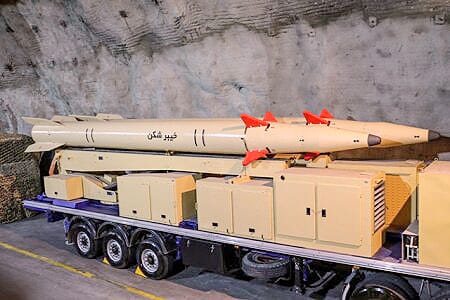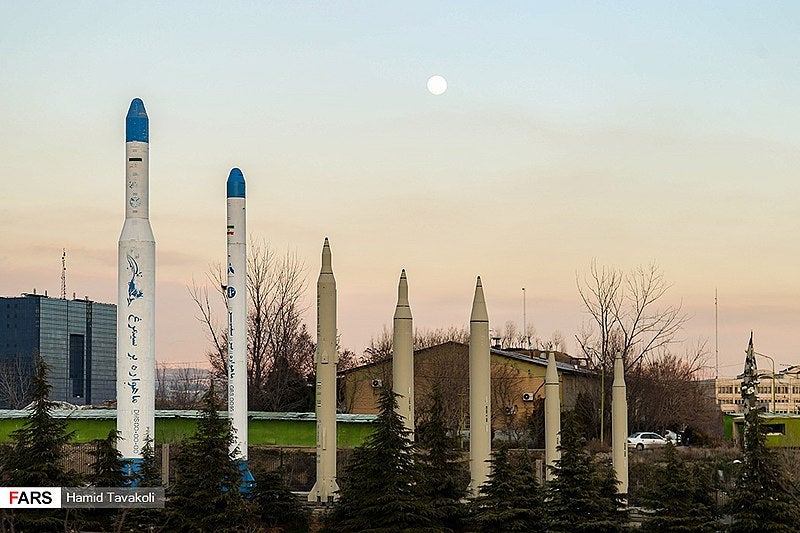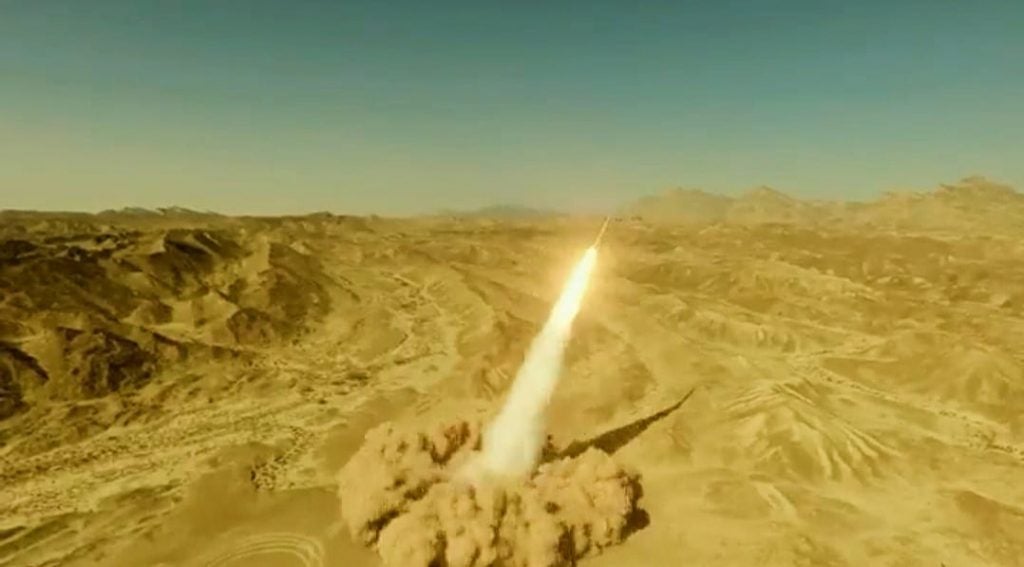Iran Unveils New 1,450 Kilometer Range “Kheibarshekan” Missile
Tasnim news agency, affiliated with the Iranian revolutionary guards, reported on 9 February, that Iran had unveiled a new ballistic missile with a range of 1450 kilometers, dubbed “Kheibarshekan,” to commemorate the 40th anniversary of the Islamic Revolution’s victory.
The missile’s unveiling came a day after Iran and countries from around the world resumed discussions in Vienna for a fresh round of talks aimed at restoring the 2015 nuclear deal, which the Trump administration had abandoned.
Major General Mohammad Bagheri, Chief of Staff of the Iranian Armed Forces, Brigadier General Amir Ali Hajizadeh, Commander of the IRGC Aerospace Force, and senior Iranian military commanders attended the unveiling ceremony of the Kheibarshekan missile at one of the Revolutionary Guards missile bases.
At the ceremony on Wednesday morning, Mohammad Bagheri, the Chief of General Staff of the Iranian Armed Forces, stated that his country will continue to develop its “qualitative and quantitative” missile program, adding, “The enemies of the Islamic Republic understand nothing but the language of power and force.”
Brigadier General Amir Ali Hajizadeh, Commander of the Revolutionary Guards Aerospace Force, who gave information about this domestic system, designed and built by Iranian scientists and engineers, stated that the 1,450km medium range Kheibarshekan missile, which he described as unique in terms of weight and launch, will provide significant power to the Revolutionary Guards Aerospace Force.
According to Hajizadeh, the new solid-fuel strategic missile belongs to the IRGC’s third generation of missiles. According to Hajizadeh, the weight of this missile has been decreased, the launch time has been drastically reduced, and the destructive power of the missile has increased thanks to the unspecified materials employed in the missile’s warhead.

Although the IRGC Aerospace Commander did not disclose precise information regarding the Kheibarshekan missile, based on inferences from the released footage, several Iranian analysts estimated that the Kheibarshekan missile had a length of 10 meters and a diameter of 800 mm. Furthermore, the missile can be seen making a hit on the target in the published footage of the test fire, indicating that it has a very low circular error of probability (CEP) value.
The name of the newly unveiled Kheibarshekan (meaning ‘Castle Buster’) does not directly refer to Israel but Israeli media have suggested it refers to a historical battle in 628 between Jews living in Khaybar, an oasis located 150 kilometers (93 miles) from Medina in the northwestern Arabian Peninsula (present-day Saudi Arabia), and the first Muslims led by the Islamic prophet Mohammed.

Iran, which has a significant indigenous ballistic and cruise missile program, reportedly has cruise missiles with a range of 2,500 km able to reach US bases in the region and Israel, as well as a variety of short-range (300-700 km) and medium-range (2,000 km) ballistic missiles. Western governments and their regional allies regard possession of these missiles as a major risk, while Iran argues that its missile program is solely a deterrent and refuses to engage in any negotiations.

